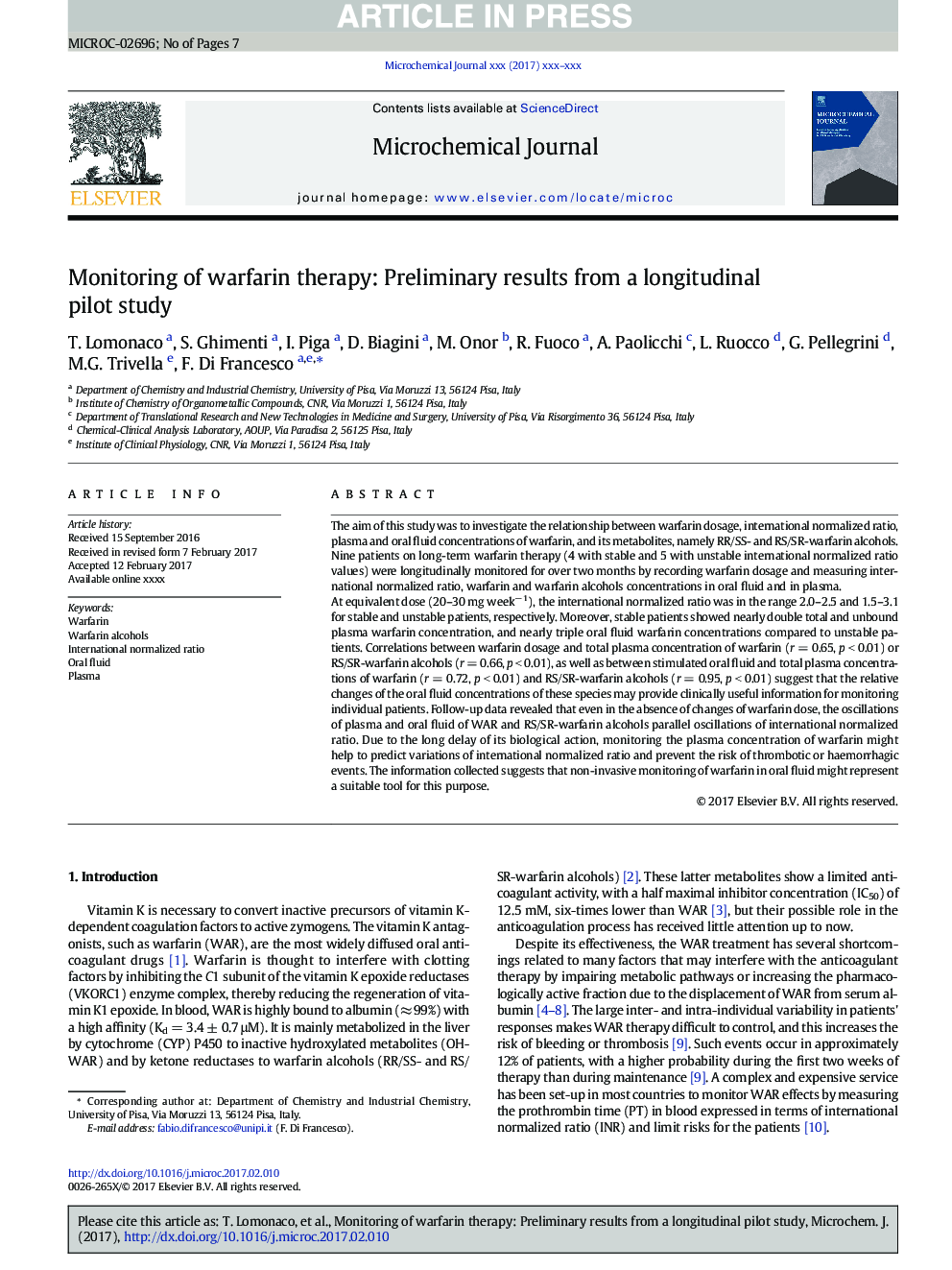| Article ID | Journal | Published Year | Pages | File Type |
|---|---|---|---|---|
| 5138965 | Microchemical Journal | 2018 | 7 Pages |
Abstract
At equivalent dose (20-30 mg weekâ 1), the international normalized ratio was in the range 2.0-2.5 and 1.5-3.1 for stable and unstable patients, respectively. Moreover, stable patients showed nearly double total and unbound plasma warfarin concentration, and nearly triple oral fluid warfarin concentrations compared to unstable patients. Correlations between warfarin dosage and total plasma concentration of warfarin (r = 0.65, p < 0.01) or RS/SR-warfarin alcohols (r = 0.66, p < 0.01), as well as between stimulated oral fluid and total plasma concentrations of warfarin (r = 0.72, p < 0.01) and RS/SR-warfarin alcohols (r = 0.95, p < 0.01) suggest that the relative changes of the oral fluid concentrations of these species may provide clinically useful information for monitoring individual patients. Follow-up data revealed that even in the absence of changes of warfarin dose, the oscillations of plasma and oral fluid of WAR and RS/SR-warfarin alcohols parallel oscillations of international normalized ratio. Due to the long delay of its biological action, monitoring the plasma concentration of warfarin might help to predict variations of international normalized ratio and prevent the risk of thrombotic or haemorrhagic events. The information collected suggests that non-invasive monitoring of warfarin in oral fluid might represent a suitable tool for this purpose.
Related Topics
Physical Sciences and Engineering
Chemistry
Analytical Chemistry
Authors
T. Lomonaco, S. Ghimenti, I. Piga, D. Biagini, M. Onor, R. Fuoco, A. Paolicchi, L. Ruocco, G. Pellegrini, M.G. Trivella, F. Di Francesco,
